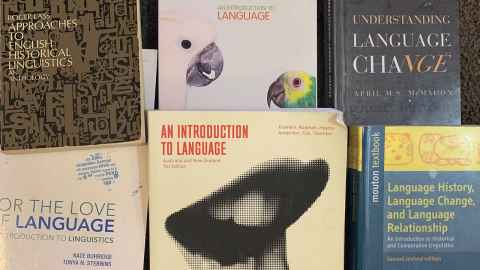Copyright challenges faced by universities during lockdown and beyond
1 July 2020
Melanie Johnson is on the copyright negotiation team for Universities New Zealand. She explains the complexities behind ensuring all students had access to textbooks during the Covid-19 campus closedowns.

One of the major challenges of transforming a physical university to a virtual one was copyright.
I'm the copyright officer for the University of Auckland and it's clear the Copyright Act has not kept pace with the way we teach, particularly in the virtual classroom.
The education exceptions are prescriptive and envisage teaching in a physical classroom as it was in 1994 when films were available on VHS and could be cued to the right place to show a short segment in class, and lecture recordings, if they existed at all, were the plaything of computer science.
While some tinkering has occurred since then, the underlying premise is the same. Some publishers’ distrust of digital publishing, and the many ways books are made available electronically, is challenging. This is normally managed by buying sufficient print copies to hold in the library for students who may not have the resources to purchase textbooks.
The University of Auckland had a trial run in February with its students on a Study Plan in China. Universities in the southern hemisphere were about to start the academic year with a cohort of international students unable to get into the country so what we faced was unique. Those students were unable to buy textbooks or access the library collections of physical books, so all teaching and access to content had to be online.
I was part of a group charged with finding a way around this for all universities, to ensure students overseas weren’t disadvantaged. We approached Copyright Licensing Ltd (CLL) who granted us the right to copy up to 50 percent of a book, to be made available only to those overseas students on a Study Plan in Semester One. This was a big leap from the 10 percent normally allowed under the licence and not an easy decision for CLL to take.
At the University of Auckland, we use Talis which means all use of licensed works is reported to CLL, who then pay the publishers. Keeping a record of our use of published works, and the regular payments to rights’ owners, means publishers’ distrust of universities is slowly softening.
When the decision was made to move to online teaching for domestic students as well, we again approached CLL hoping to extend the licence to copy 50 percent for the duration of the emergency and online teaching. It was a few weeks into the term and students who were going to buy the textbook would in all likelihood have done so. CLL agreed to allow us to digitise 50 percent of textbooks and at the same time approached publishers for the right to copy up to 100 percent.
While most publishers agreed, those who had books available in an electronic format expected students to buy these. This meant permission to copy 100 percent needed to be obtained from the publishers on an individual basis.
Then there were the OneMusic and Screenrights licences, broadly worded to allow whole works to be copied and shared in a virtual classroom. This is largely because using this content for teaching doesn’t compete with the market for these works in the way that copying textbooks does.
What was difficult was commercial DVDs. This is where the prescriptive nature of the Copyright Act and the lack of exceptions meant there was no legal way we could copy DVDs and share them with students, either through lecture recording or by allowing them to be borrowed virtually. Unlike U.S. universities, we cannot rely on ‘fair use’ to make these available. Generally speaking, so long as the use is educational, transformative and doesn’t impinge on the rights owner’s ability to sell or license the work, fair use is a defence to any copyright claim. Critical analysis of films for teaching purposes doesn’t compete with the original use of the work to entertain.
Unlike U.S. universities, we cannot rely on ‘fair use’ to make DVDs available. There, so long as the use is educational, transformative and doesn’t impinge on the rights owner’s ability to sell or license the work, fair use is a defence to any copyright claim.
Many teaching staff use YouTube or documentaries that have been broadcast and so are covered by the Screenrights licence. If a film has been broadcast and the library has recorded and added the work to the University of Auckland's TV and radio database, it will be available to share with our students for educational purposes.
Not so textbooks, for which there is an established market and making 50 or 100 percent of a textbook available to students could make a serious dent in the market for those books. Already, bookshops are in a difficult position with piles of Semester One textbooks now unsold.
The reason Copyright Licensing was open to extending the licence is because our universities have made e-reporting mandatory for all staff through Talis. There’s a concerted push to ensure staff copying content do so under the licence request digitisation through Talis, meaning publishers receive payment in recompense for the use of their works.
Negotiations for Semester Two are ongoing. If our universities continue to teach their overseas students online, there’s an added push for teaching resources to be available electronically.
At this point, academic staff are again limited to 10 percent, or one chapter, and may be asked to look for alternative texts available electronically. Copying under the extended licence of 50 percent of textbooks is not sustainable in the long term. It’s an evolving situation but one that has shown the need for revamping the system for the modern age.
This article first appeared in the July 2020 issue of UniNews.